Advanced Visualization Polarimetric Imaging: Removal of Water Spray Effect Utilizing Circular Polarization
Abstract
1. Introduction
2. Materials and Methods
2.1. Optical Model of Rainy Conditions
2.2. Water Spray Removal
3. Results and Discussion
3.1. Effect of Water Spray Removal
3.2. Color Analysis
4. Conclusions
Author Contributions
Funding
Institutional Review Board Statement
Informed Consent Statement
Acknowledgments
Conflicts of Interest
References
- Ding, Z.; Tang, Q.; Liang, C.-P.; Wu, K.; Sandlerc, A.; Li, H.; Chen, Y. Imaging Spinal Structures with Polarization-Sensitive Optical Coherence Tomography. IEEE Photon J. 2016, 8, 1–8. [Google Scholar] [CrossRef]
- Cao, L.; Shao, X.; Liu, F.; Wang, L. Dehazing method through polarimetric imaging and multi-scale analysis. In Proceedings of the Satellite Data Compression, Communications and Processing XI, Baltimore, MD, USA, 21 May 2015; p. 950111. [Google Scholar]
- Guan, J.; Zhu, J. Target detection in turbid medium using polarization-based range-gated technology. Opt. Express 2013, 21, 14152–14158. [Google Scholar] [CrossRef] [PubMed]
- Schechner, Y.Y.; Narasimhan, S.G.; Nayar, S.K. Polarization-based vision through haze. Appl. Opt. 2003, 42, 511–525. [Google Scholar] [CrossRef] [PubMed]
- Ullah, K.; Liu, X.; Xiong, J.; Hao, J.; Xu, B.; Jun, Z.; Liu, W. A polarization parametric method of sensing the scattering signals from a submicron particle. IEEE Photonics Technol. Lett. 2016, 29, 1–4. [Google Scholar]
- He, K.M.; Sun, J.; Tang, X.O. Single image haze removal using dark channel prior. IEEE Trans. Pattern Anal. Mach. Intell. 2010, 33, 2341–2353. [Google Scholar] [PubMed]
- Yeh, C.-H.; Kang, L.-W.; Lee, M.-S.; Lin, C.-Y. Haze effect removal from image via haze density estimation in optical model. Opt. Express 2013, 21, 27127–27141. [Google Scholar] [CrossRef] [PubMed]
- Schechner, Y.; Narasimhan, S.; Nayar, S. Instant dehazing of images using polarization. In Proceedings of the 2001 IEEE Computer Society Conference on Computer Vision and Pattern Recognition CVPR 2001, Kauai, HI, USA, 8–14 December 2001; pp. 325–332. [Google Scholar]
- Liang, J.; Ren, L.; Ju, H.; Zhang, W.; Qu, E. Polarimetric dehazing method for dense haze removal based on distribution analysis of angle of polarization. Opt. Express 2015, 23, 26146–26157. [Google Scholar] [CrossRef] [PubMed]
- Treibitz, T.; Schechner, Y.Y. Active Polarization Descattering. IEEE Trans. Pattern Anal. Mach. Intell. 2009, 31, 385–399. [Google Scholar] [CrossRef] [PubMed]
- Fang, S.; Xia, X.; Huo, X.; Chen, C. Image dehazing using polarization effects of objects and airlight. Opt. Express 2014, 22, 19523–19537. [Google Scholar] [CrossRef] [PubMed]
- Liu, F.; Cao, L.; Shao, X.; Han, P.; Bin, X. Polarimetric dehazing utilizing spatial frequency segregation of images. Appl. Opt. 2015, 54, 8116–8122. [Google Scholar] [CrossRef] [PubMed]
- Li, X.; Liu, F.; Han, P.; Wei, Y.; Zhao, D.; Shao, X.; Zhao, X. Research on polarization dehazing through the coaxial and multi-aperture polarimetric camera. OSA Contin. 2019, 2, 2369–2380. [Google Scholar] [CrossRef]
- Mobley, C.D. Light and Water: Radiative Transfer in Natural Waters; Academic Press: San Diego, CA, USA, 1994. [Google Scholar]
- Hansen, J.E.; Travis, L.D. Light scattering in planetary atmospheres. Space Sci. Rev. 1974, 16, 527–610. [Google Scholar] [CrossRef]
- Konnen, G.P. Polarized Light in Nature; Cambridge University Press: Cambridge, UK, 1985. [Google Scholar]
- Liu, F.; Shao, X.; Xu, J.; Han, P. Design of a circular polarization imager for contrast enhancement in rainy conditions. Appl. Opt. 2016, 55, 9242–9249. [Google Scholar] [CrossRef] [PubMed]
- Ishimaru, A.; Jaruwatanadilok, S.; Kuga, Y. Polarized pulse waves in random discrete scatterers. Appl. Opt. 2001, 40, 5495–5502. [Google Scholar] [CrossRef] [PubMed]
- Hu, H.; Zhao, L.; Li, X.; Wang, H.; Yang, J.; Li, K.; Liu, T. Polarimetric image recovery in turbid media employing circularly polarized light. Opt. Express 2018, 26, 25047–25059. [Google Scholar] [CrossRef] [PubMed]
- Xu, M.; Alfano, R.R. Circular polarization memory of light. Phys. Rev. E 2005, 72, 065601. [Google Scholar] [CrossRef] [PubMed]
- Liu, F.; Han, P.; Wei, Y.; Yang, K.; Huang, S.; Li, X.; Zhang, G.; Bai, L.; Shao, X. Deeply seeing through highly turbid water by active polarization imaging. Opt. Lett. 2018, 43, 4903–4906. [Google Scholar] [CrossRef] [PubMed]
- Liu, F.; Wei, Y.; Han, P.; Yang, K.; Bai, L.; Shao, X. Polarization-based exploration for clear underwater vision in natural illumination. Opt. Express 2019, 27, 3629–3641. [Google Scholar] [CrossRef] [PubMed]
- Han, P.; Liu, F.; Wei, Y.; Shao, X. Optical correlation assists to enhance underwater polarization imaging performance. Opt. Lasers Eng. 2020, 134, 106256. [Google Scholar] [CrossRef]
- Narasimhan, S.G.; Nayar, S.K. Contrast restoration of weather degraded images. IEEE Trans. Pattern Anal. Mach. Intell. 2003, 25, 713–724. [Google Scholar] [CrossRef]
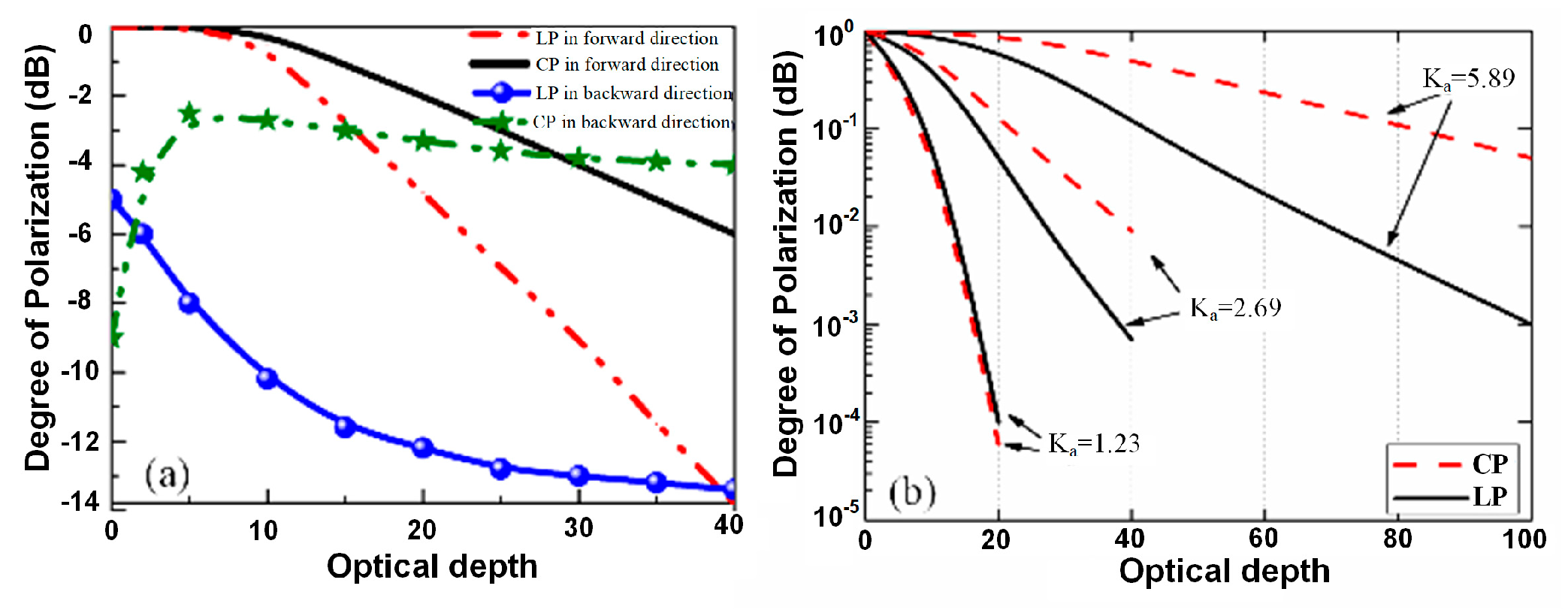

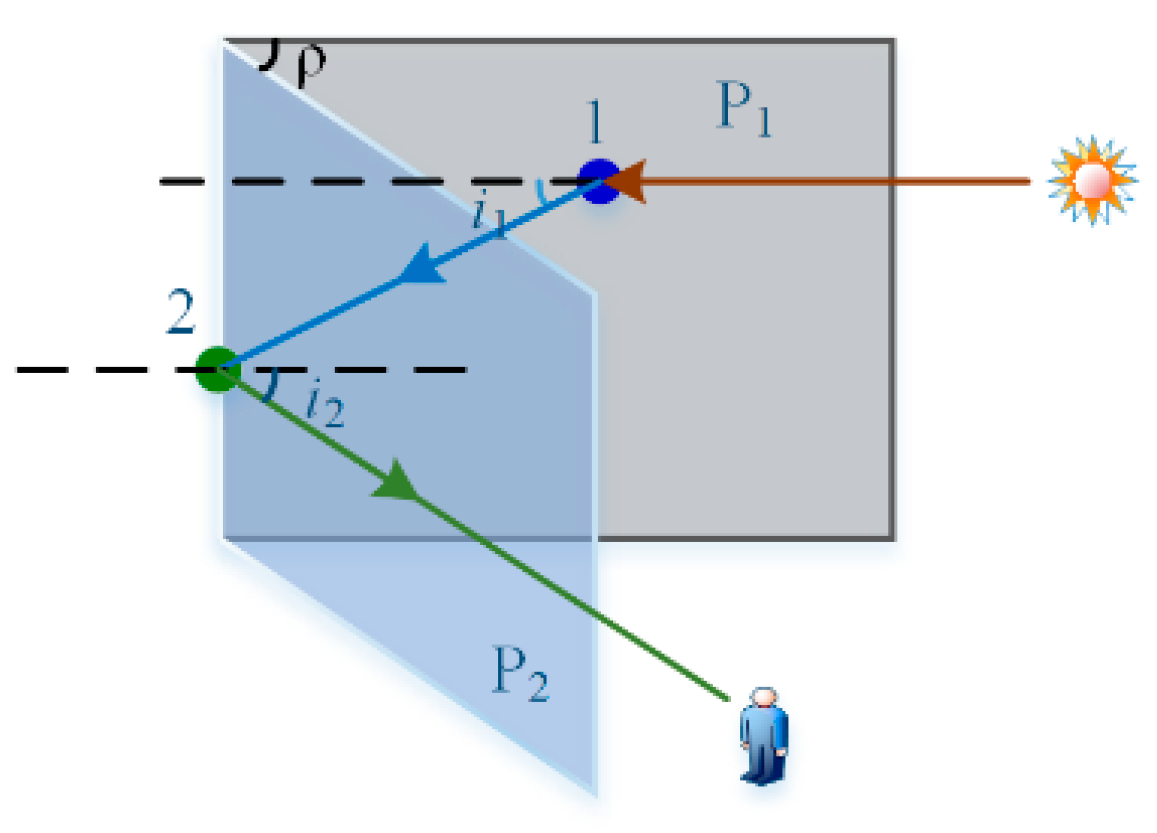
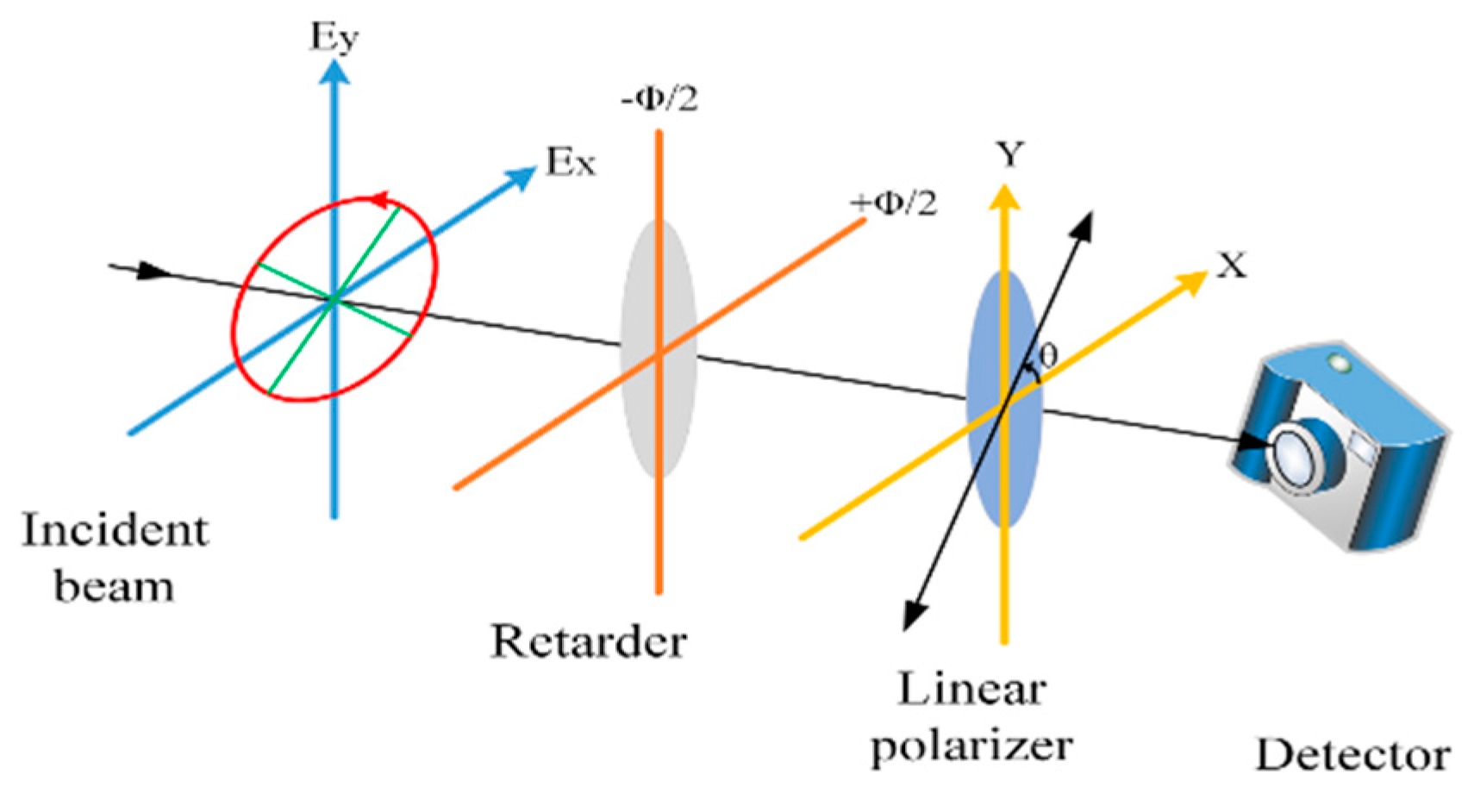
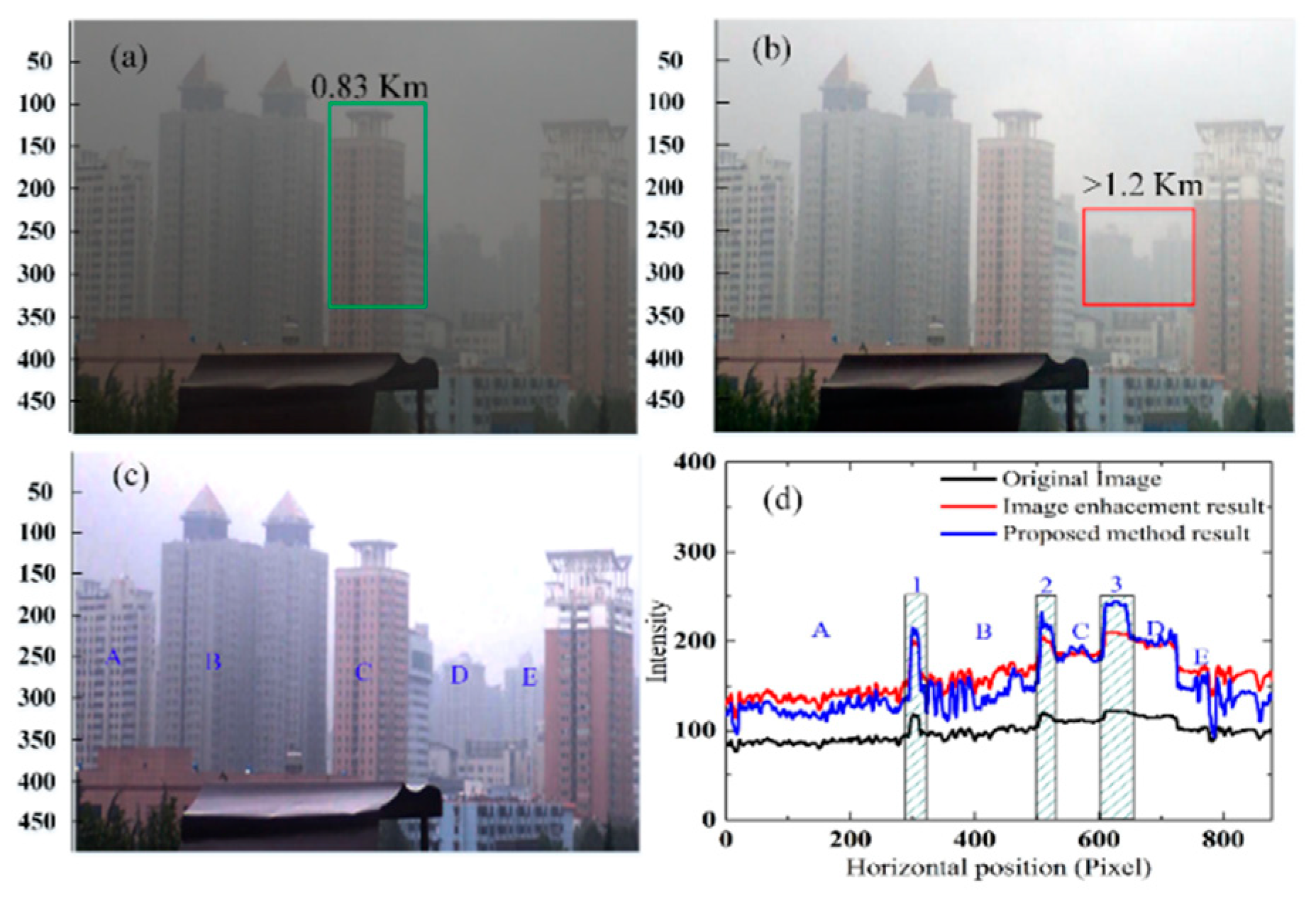


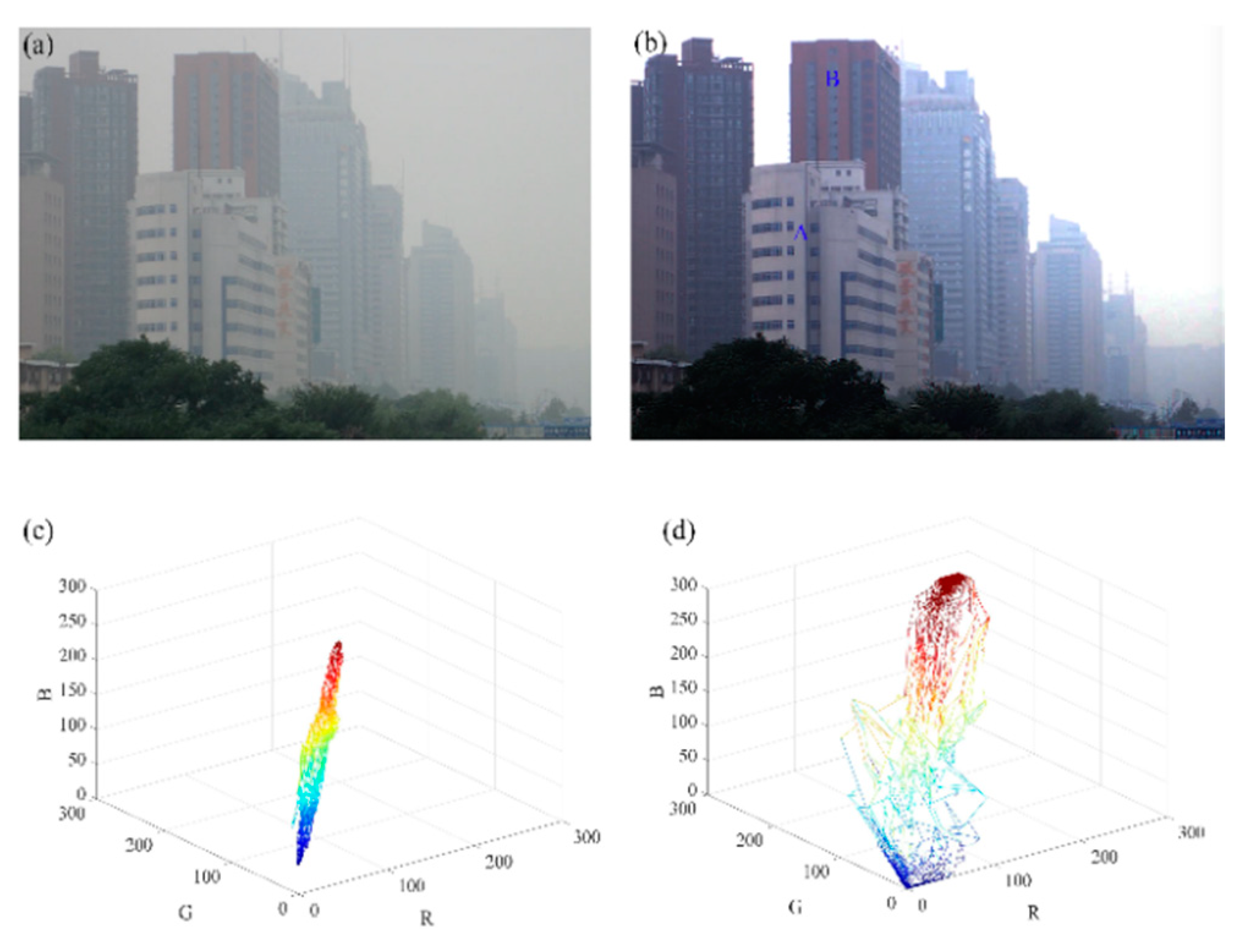
| Parameters | Scene One | Scene Two | Scene Three |
|---|---|---|---|
| Temperature (°C) | 20 | 21 | 25 |
| Rainfall capacity (mm/h) | 1.9 | 1 | 0.6 |
| Relative humidity | 99% | 90% | 55% |
| Wind strength (Km/h) | 5 | 10 | 10 |
| Wind direction | North | North | North |
| Rain level | Light rain | Light rain | Drizzle |
Publisher’s Note: MDPI stays neutral with regard to jurisdictional claims in published maps and institutional affiliations. |
© 2021 by the authors. Licensee MDPI, Basel, Switzerland. This article is an open access article distributed under the terms and conditions of the Creative Commons Attribution (CC BY) license (http://creativecommons.org/licenses/by/4.0/).
Share and Cite
Liu, F.; Li, X.; Han, P.; Shao, X. Advanced Visualization Polarimetric Imaging: Removal of Water Spray Effect Utilizing Circular Polarization. Appl. Sci. 2021, 11, 2996. https://doi.org/10.3390/app11072996
Liu F, Li X, Han P, Shao X. Advanced Visualization Polarimetric Imaging: Removal of Water Spray Effect Utilizing Circular Polarization. Applied Sciences. 2021; 11(7):2996. https://doi.org/10.3390/app11072996
Chicago/Turabian StyleLiu, Fei, Xuan Li, Pingli Han, and Xiaopeng Shao. 2021. "Advanced Visualization Polarimetric Imaging: Removal of Water Spray Effect Utilizing Circular Polarization" Applied Sciences 11, no. 7: 2996. https://doi.org/10.3390/app11072996
APA StyleLiu, F., Li, X., Han, P., & Shao, X. (2021). Advanced Visualization Polarimetric Imaging: Removal of Water Spray Effect Utilizing Circular Polarization. Applied Sciences, 11(7), 2996. https://doi.org/10.3390/app11072996








